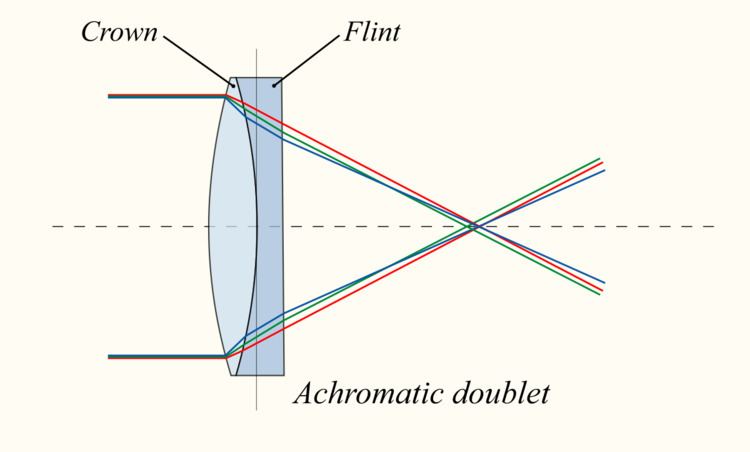 | ||
Crown glass is a type of optical glass used in lenses and other optical components. It has relatively low refractive index (≈1.52) and low dispersion (with Abbe numbers around 60). Crown glass is produced from alkali-lime (RCH) silicates containing approximately 10% potassium oxide and is one of the earliest low dispersion glasses.
As well as the specific material named crown glass, there are other optical glasses with similar properties that are also called crown glasses. Generally, this is any glass with Abbe numbers in the range 50 to 85. For example, the borosilicate glass Schott BK7 is an extremely common crown glass, used in precision lenses. Borosilicates contain about 10% boric oxide, have good optical and mechanical characteristics, and are resistant to chemical and environmental damage. Other additives used in crown glasses include zinc oxide, phosphorus pentoxide, barium oxide, fluorite and lanthanum oxide.
A concave lens of flint glass is commonly combined with a convex lens of crown glass to produce an achromatic doublet. The dispersions of the glasses partially compensate for each other, producing reduced chromatic aberration compared to a singlet lens with the same focal length.
